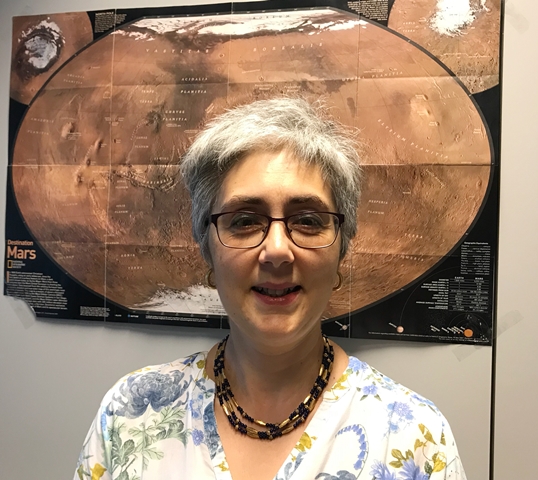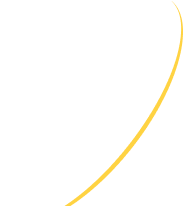
Elena Righi
Head of Euratom Research
European Commission
Tell me about your career in fusion:
- Why did you choose to work in fusion?
- I’d say rather that fusion chose me. When I started University at the Physics Faculty of Milano, my initial orientation was to study the structure and evolution of stellar systems, with a specific interest in the Sun. I have had a lifelong passion for astronomy, and I was interested in star structure and evolution as well. This led me to study Theoretical Plasma Physics and graduate with an original thesis on transition to stochastic motion of relativistic plasma electrons powered by high energy EC waves.
- What I did not count on in all my planning was the lack of jobs for theoretical astrophysicists… and I did not know how to become one. Around that time an Italian member of the JET Team, who also graduated at Milano University, came to give a lecture on fusion and JET, promoting the possibility of three month Student Assistant grants from Euratom. I applied and on 1 October 1990. I walked through the doors of the K1 foyer at JET soon after … and remained for 7 years! Then I applied for a 3 years Ph.D. Euratom sectoral grant to be carried out at JET and Imperial College London, which I did during the big shutdown that ended with the installation of the MkI divertor, the Be First Wall, and the A2 ICRF antennas amongst others. My thesis assessed the influence of large minority ion orbit effects on power deposition profiles during high power ICRF heating, using JET data – a theoretical thesis, but firmly grounded in experimental results.
- How has your career progressed?
- I completed my Ph.D. on time, in May 1994, then discovered that – of course! – there were no Euratom posts to be had. So I remained at JET for four more years as a so-called “JET Fellow” – in practice, as a contractor. At the time, I was also offered a position at Glasgow University with Prof. John Brown (who went on to become Astronomer Royal for Scotland), to study coronal heating using magneto-acoustic waves. In the end, I decided to remain at JET, amongst other things because, in the meantime, I had married and logistically it was difficult to move. Sometimes I wonder how my life would have developed if I had taken a different decision. At the time there were two opposing groups researching coronal heating in the Sun: Glasgow University with Prof. Brown pursued wave heating, while St Andrews University with Prof. Eric Priest pursued heating through MHD reconnection. Decades later, it was decidedly proven that coronal heating takes place mainly through MHD reconnection of magnetic flux lines in the Sun’s corona, and I had the pleasure to meet Prof. Priest as well, when I was already working in Brussels. In the end, I did not work in solar physics, but fusion research gave me the tools to understand and follow both areas. And the Sun remains a big influence in my life.
- I remained in JET, in the RF Heating Division, but I was told, in no uncertain terms, that they had no need for a theoretician – if I wanted to remain, I was more than welcome, but I had to roll up my sleeves and do my bit. OK, I replied, happy to. So, they gave me a volt meter and told me to go down to the RF Plant and debug the signals arriving at the screens in the control room in the RF CODAS cubicles. The volt meter, that mysterious creature, well, I did not have a clue! That is when I discovered the true meaning of the JET Team: nobody was so busy that they could not take a bit of time to teach engineering to a hapless theoretician. So I learned my way around the plant, debugged the signals, and learnt in practice what happened at the plant side (and High Voltage Power Supplies) when ICRF heating was applied on plasma. I could talk to physicists and engineers now and understand both. In my time at JET I worked my way from RF Pilot (a duty everybody in the RF Heating Division had to share, in one way or another) to Physicist in Charge (so I learned all diagnostics), then finally I became Session Leader.
- In 1997, after the completion of the DTE1 experiments, I joined the ITER EDA at the NET Team (subsequently the EFDA Close Support Unit) in Garching to work on the EU efforts on plasma engineering of the heating systems. It was an eye opener in more ways than one, but also a place where I made friendships for life.
- In 2001, I moved to the European Commission, where I managed contracts in the fields of radio astronomy, astrophysics, astroparticle physics, space and inertial fusion, plus a number or exciting policy areas at global level. Then, in 2014, I went back to my professional roots and became Deputy Head of the ITER Unit, and in 2017, I became Head of Fusion Energy Research in DG RTD. Finally in 2019 I took over the coordination of the whole of Euratom Research, which includes international cooperation, policy and management of fission and fusion research.
- What are your areas of expertise?
- I became a sort of hybrid and enjoyed it. While I started as a theoretician, I then specialised in the propagation and absorption of high power ICRF heating in fusion plasma, and at the same time I learned to use the ICRF antennas for experiments – by use I really mean nurse, coax into coupling with the plasma, diagnosing why it was not working, tweaking the minority gas, etc., learning all the tricks to make sure the maximum RF power was coupled to the plasma at the right place, while trying not to shred the plant to pieces. The A2 antennas were not exactly cooperative compared with the A1.
- I also started working on H-mode power threshold issues, including its scaling law with the Theory Group, and gradually I developed expertise in this area. In the long run I became responsible for the JET input to the multi-machine H-mode power threshold database and started to design and carry out experiments to test the models. In this way, I spent an enormous part of my time preparing and carrying out experiments, analysing in detail shots’ timetraces, and validating the data points to enter the database, with different divertors, gases, configurations, etc. and extrapolating/confirming the model for the threshold power needed to enter the H-mode regime. When preparations for DTE1 started, I proposed an experiment to test the H-mode power threshold using H, D, DT and T plasmas with both NBI and/or ICRF heating and different Ip/Bt combinations (keeping q95=3). I prepared and carried out the reference pulses in DD and H, which were used also in the DTE1 20 years later. This experiment was selected for DTE1 and I carried it out as Session Leader, a lesson in endurance, negotiation skills, diplomacy, patience, frustration management, team effort, long hours, and a wonderful, unique experience.
- What advice or recommendations would you give to a person looking to enter into fusion?
- I think that things have changed a lot since I was active in the field. Now I also see it from a managerial point of view, rather than purely scientific, and from the funder’s angle.
- What I would say to someone thinking about entering the field is: do not think too much about it – if you have an opportunity and it feels right for you, take it, and see where it leads you. Go with the flow. Even if only for a few years, it will be an incredible training ground for your future life. The realisation of ITER, and fusion in general, is an extremely complex and multi-disciplinary endeavour that needs science (physics, chemistry, materials, mathematics), engineering (mechanical, electrical), management, financial and negotiation skills, patience, and diplomacy. It’s an international environment where you will forge friendships that will last a lifetime across continents, and will make you feel part of a big family. That does not mean it’s easy, on the contrary. But we do not do it because it’s easy, we do it because we think it’s the right thing to do, and we have a lot of fun along the way. If at some point life forces you to make career and life choices, make them without regrets, because what you have learnt in fusion will stand you in good stead for the rest of your life, and you never know if and when you may go back to it, maybe in another role.
- Could you discuss some of the main highlights and challenges of your career?
- The main highlights for me are two: the first day I walked into the Control Room and realised I belonged there (so it’s not true that theoreticians should be kept away from machines!), and the whole experience of carrying out the DTE1 experiments. Nothing else equals those moments. When I saw my DTE1 paper quoted in the ITER Research Plan I thought “ok I have left a legacy to the future. I am happy!”
- From the human point of view, I hope that now the environment is a bit more open and accepting, less rigid. While I personally experienced few instances of outright discrimination, and certainly next to none from my male colleagues (quite the contrary, I always made to feel like ‘one of the boys’), looking back, I realise now that certain colleagues behaved in a way that I now know was not right, only at the time I did not know what it was, or to whom I could turn to for help and advice. I survived, of course. That is why it is very important to me that people should be accepted for who and what they are or believe in, independently or origin, creed, gender, or anything else. Also, the whole issue of having to move with a family and a partner who had to choose between my career and his or remain separated and work in two countries added a lot of stress to my life during a long period. I wish there were a way to avoid this.

